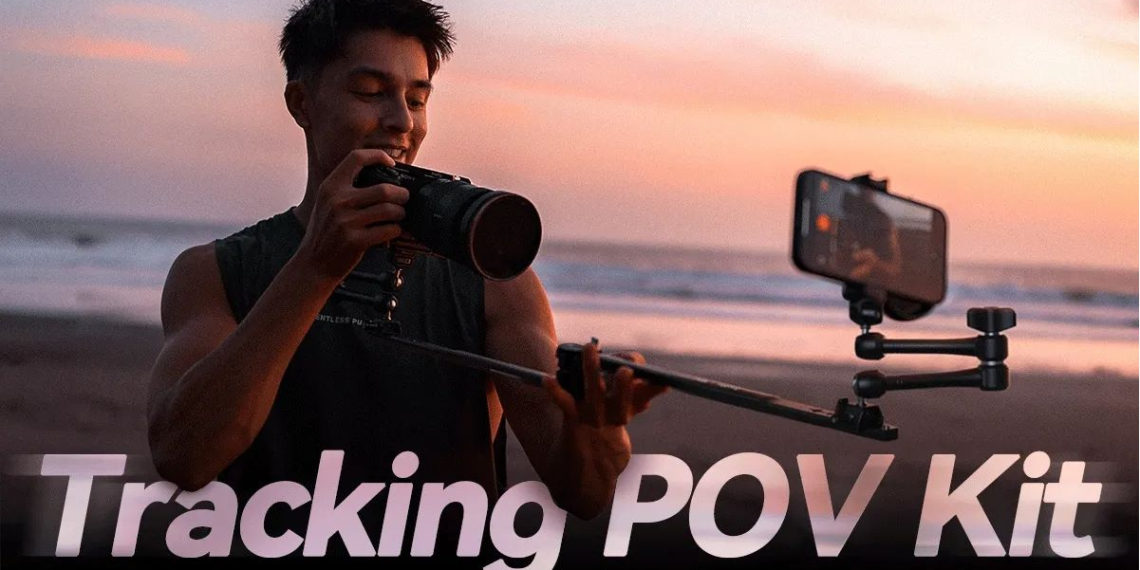In videography, creativity is the basis for storytelling; technical dexterity meets artistic vision. Consequently, Point of View (POV) shooting is a technique that uses a first-person perspective to forge a more profound connection with the audience. The method utilizes camera stabilization and perspective-focused framing for better narrative immersion. It offers a unique vantage point, inviting viewers to enter the characters’ shoes. So, while marrying technical precision with creative storytelling, POV shooting with camera arms alters how stories are experienced and perceived.
Significance of POV Shots in Visual Storytelling
In visual storytelling, POV shots with camera arms immerse the audience into a character’s experience, seeing through their eyes. It involves aligning the camera’s perspective with the character’s line of sight. The method boosts emotional connection and excavates narrative engagement.
For example, in suspense or horror genres, POV shots can intensify the viewer’s empathy and suspense with the replicated character’s field of vision. Plus, the shots reveal crucial plot details or character reactions. It shifts the audience from an observer to a participant in the story’s unfolding.
Camera Arm as a Necessary Filming Accessory
We know the camera arm is a necessary filming accessory. Along these lines, let’s understand the common problems that encumber the capture of incredible POV shots.
- Stability Issues
Camera arms help attain smooth, dynamic shots yet may grapple with stability challenges. Some of them may suffer from instability due to poor construction or inadequate support systems. Such an issue could be aggravated in outdoor environments as wind and uneven terrain could play an undesirable role. The unwanted shake or drift can result in blurry images or videos, compromising the final output’s quality. In this case, a robust and stable design is critically required.
- Limited Reach and Flexibility
Another possible hurdle with camera arms is the restricted movement and reach. Some arms may lack the flexibility to adjust angles or follow fast-paced action effectively. It could hamper capturing expansive, wide-angle shots or close-ups from challenging angles. To make a broad range of perspectives available, camera arms designed with features for extended reach and versatile articulation, like multi-angle adjustment, should be on your top list.
- Limited Compatibility with Cameras
Camera arms also face compatibility issues with camera sizes and weights. Standard ones are optimized for a weight range and may struggle with ultra-lightweight action cameras or heavy professional-grade equipment. It affects the arm’s balance and motion smoothness.
For instance, a heavy cinema camera might require surplus counterweights or a more robust arm while complicating the setup process. Conversely, lightweight cameras might not trigger the stabilizing mechanisms, which prompts jittery footage.
The point may lie in adjustment in mounting options and weight-bearing capabilities.
- Inadequate Control and Precision
Inadequate control and precision of camera arms can also impact the quality of POV shots. In fast-paced filming environments, quick and accurate adjustments are much preferred since they contribute to optimal framing and composition. To cope with this problem, detailed characteristics like scale marks help to save adjustment time and effort.
Hot Pick: SmallRig x Mikevisuals Extension Arm Tracking Shot Kit
Among diverse brands, SmallRig is recognized for crafting many high-quality camera gear. Concerning camera arms, the SmallRig x Mikevisuals Extension Arm Tracking Shot Kit emerges as one highly helpful tool during filming.
Its dual 11″ rosette arms offer stability and multi-faceted adjustment to exclude wobble and shake. Besides, an extension range of 70-49cm grants reach and flexibility for varied shooting scenarios. Notably, the built-in 1/4 “-20 threaded hole, ARRI 3/8 “-16 locating hole, and NATO rail ensure compatibility with diverse accessories. The 360˚ adjustability at both ends also provides precise control for smooth and professional tracking shots. This kit’s design highlights functionality and portability for complicated filming requirements.
Conclusion
SmallRig creates unique and the best camera rigs and accessories while emphasizing flexibility. Their camera arms and many other products handle filming equipment for wide-ranging shooting scenarios. SmallRig’s offerings are acknowledged for their build quality and thoughtful design, integrating user feedback into product development. It confirms that their products are technically radical and customized to the real-world needs of filmmakers and photographers.







